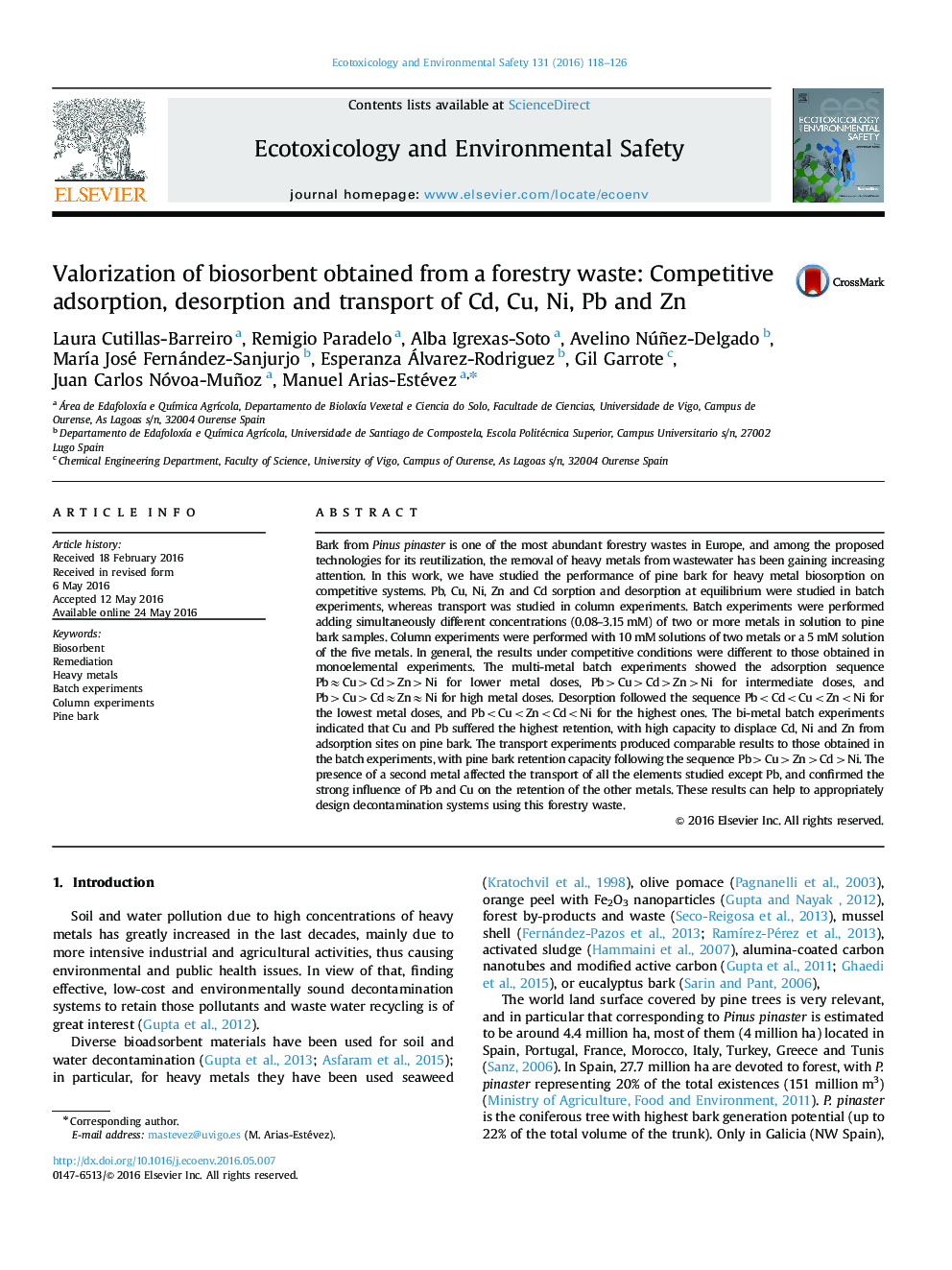| Article ID | Journal | Published Year | Pages | File Type |
|---|---|---|---|---|
| 6311914 | Ecotoxicology and Environmental Safety | 2016 | 9 Pages |
â¢Valorization of pine bark for multimetal removal was studied in lab-scale experiments.â¢Multi-metal batch-type experiments showed the adsorption sequence PbâCu>Cd>Zn>Ni.â¢Bi-metal experiments show that Cu and Pb had a high capacity to desorb other metals.â¢Column experiments showed the sequence Pb>Cu>Zn>Cd>Ni for retention capacity.â¢Pine bark could be useful in the treatment of multi-metal systems.
Bark from Pinus pinaster is one of the most abundant forestry wastes in Europe, and among the proposed technologies for its reutilization, the removal of heavy metals from wastewater has been gaining increasing attention. In this work, we have studied the performance of pine bark for heavy metal biosorption on competitive systems. Pb, Cu, Ni, Zn and Cd sorption and desorption at equilibrium were studied in batch experiments, whereas transport was studied in column experiments. Batch experiments were performed adding simultaneously different concentrations (0.08-3.15Â mM) of two or more metals in solution to pine bark samples. Column experiments were performed with 10Â mM solutions of two metals or a 5Â mM solution of the five metals. In general, the results under competitive conditions were different to those obtained in monoelemental experiments. The multi-metal batch experiments showed the adsorption sequence PbâCu>Cd>Zn>Ni for lower metal doses, Pb>Cu>Cd>Zn>Ni for intermediate doses, and Pb>Cu>CdâZnâNi for high metal doses. Desorption followed the sequence Pb
